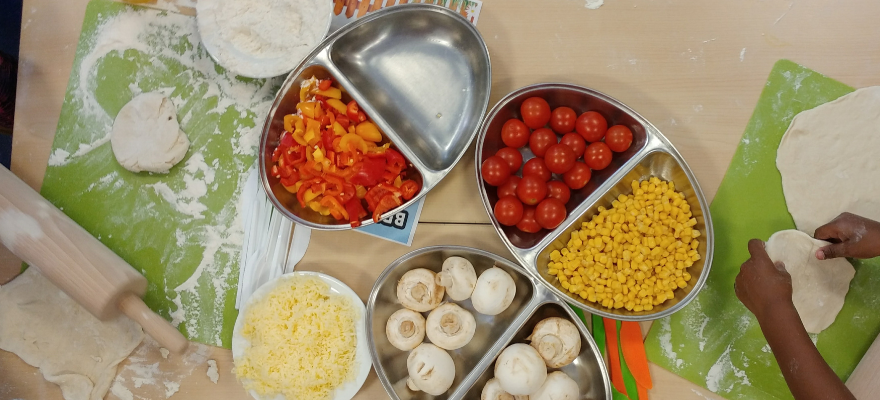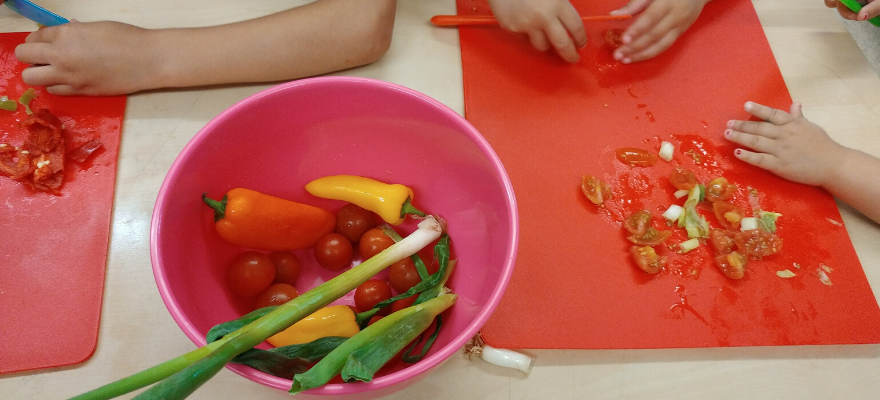Since 2014 campaigners, researchers, and MPs have been urging the Government to extend the Free School Meals (FSM) provision to prevent children from experiencing hunger during school holidays. The food insecurity has become more severe for many families due to the ongoing COVID-19 pandemic. The Government announced that the vouchers introduced in place of FSM during lockdown will be available during the upcoming holidays. However, it is understood that this support will not continue beyond summer 2020 and as a means-tested benefit does not help many families just above the income threshold. I would like to explore my PhD findings that relate to food preferences and provide recommendations for delivering an effective holiday food programme.
Free school meals and support during holidays
FSM entitles children to an allowance (approx. £2.30 per day) that can be used to buy a meal in the school cafeteria. This means-tested benefit is available from year 3. All younger pupils, regardless of income, can benefit from the Universal Infant Free School Meals. These younger children also receive a piece of fruit or vegetable per day thought the School Fruit and Vegetable Scheme. Approximately one million children are currently receiving FSM and another two million are living in poverty but might be just above the threshold for entitlement.
These provisions, crucial for many families, are only available during school term. This means that during holidays and half-term breaks children are at risk of experiencing ‘holiday hunger’. The current COVID-19 crisis negatively affected many families particularly during the early stages when we have seen empty supermarket shelves. Youngest children were also not entitled to the Government’s vouchers and there were worrying reports regarding the varying quality of food provided by schools which chose to not use the voucher scheme.
In response to the holiday gaps in food provision many charities, third sector organisations, and local authorities were providing meals and activity schemes for the children. These schemes might not be able to open their doors to children this year but the support they are continuing to offer is needed more than ever. Unfortunately, the provision is not supported by the central Government and there are no national guidelines available.
Holiday food programmes- the importance of food preferences
My PhD research, which is due for defence on the 2nd of July, explored the nutritional outcomes of holiday food programmes delivered primarily through children’s centres. I observed the schemes offered during summer 2017 in West Midlands. The majority of children who attended the programmes were under the age of 5 but older siblings also came along.
During my observations, I noticed that both children and adults (participants as well as staff) rejected foods that were unfamiliar to them. These included vegetarian versions of traditionally meat-based dishes and ‘healthier’ versions of traditional desserts such as banana flapjacks. White British participants rejected foreign dishes (e.g. Moroccan couscous salad) and several participants from ethnic minorities rejected the traditional British dishes (e.g. jacket potatoes). While the observational nature of my research prevents me from quantifying the extent of these reactions, during sixteen sessions I noted seventeen rejections (most often involving multiple families).
As a result, some children ate very small portion sizes or, in extreme cases, refused to eat altogether. Some children consumed only a part of the dish (e.g. pasta noodles with cheese but without any sauce) which meant that the meal was not nutritionally balanced. While I noted less rejections among BAME staff and families, their reactions were more severe with two families from South Asian background leaving two separate sessions just before lunch due to food unfamiliarity.
Staff mitigated this issue by providing choices (both foreign/healthier options and British foods were available) or by inviting the families to adjust the recipes and cooking methods. Unfortunately, this was not always possible due to limited budgets and limited control over the ingredients and pre-made dishes provided by a food redistribution charity.

Why do we reject food?
Children (some more than others) are known to reject food that is new to them and we have all heard about children who refused to eat a carrot because it had a different shape or texture than carrots they normally eat. Broadly speaking, there are two main explanations for why this happens: life scientists claim that this is due to the human instincts that protect us from harm and social scientists suggested that we reject food that does not fit with our cultural norms. These cultural norms, and so the tastes of children and adults, are shaped by ethnic background and socio-economic status.
The three million children experiencing food poverty in the UK are most likely living in areas where fresh and nutritious food is not easily available. They might only have access to takeaway outlets and convenience shops with poor assortment and high prices. The families might not be able to store or cook food in their accommodations. For these reasons, they might be unfamiliar with a wide range of foods that are available in larger supermarkets or restaurants.
Families on a limited income are likely to prefer traditional foods (either British or ethnic depending on their background) and might reject food that is viewed as ‘posh’ or foreign. While there are sociological and psychological explanations for these rejections, many families simply lack disposable income which means that introducing new food (that might not get eaten) is not a risk they can take.
The UK is a melting pot of cultures and Birmingham is becoming a ‘majority minority city’. Unfortunately, people from Black, Asian, and Minority Ethnic communities (BAME) are more likely than white British to be in persistent poverty and experience social and health inequalities. Many of children experiencing food poverty this summer will be from BAME background. Any scheme that addresses food insecurity must consider their culturally-influenced tastes and needs.
Recommendations for delivering effective food provision
I have identified several good practices and steps that can be taken to minimise the risk of children rejecting the food and not fully benefiting from the programmes:
- There will be differences between families from the same background but the cultural influences (related to both ethnicity and socio-economic status) on tastes should be considered when preparing the food. However, this does not mean making stereotypical presumptions about their food intake. I observed a good practice of asking the families to create a list of foods they enjoy which staff then used as a guide throughout the scheme.
- When possible, spices and condiments could be made available for adjusting the flavours. When introducing the families to potentially new foods, a good practice would be to have a backup familiar dish that is equally nutritious.
- Staff should have an awareness of the nutritional needs of children and adults and an understanding of how to compose healthy, balanced meals. Public Health England’s Eatwell Guide is a good visual tool and British Nutrition Foundation provided an easy visual guide for pre-schoolers’ portion sizes. It is also important that staff and volunteers have an awareness of religion-prohibited foods and possible easy swaps for most common ingredients.
- If providing breakfast, cereals and milk (fresh or UHT) appeared to be the best choice. They provided a large amount of vitamins and minerals and were usually enjoyed by all children regardless of background.
- If the programme is cooking with the families or providing them with recipes to use at home, the cooking techniques should be appropriate for use in accommodations with limited storage or cooking equipment. Similarly, ingredients used should be accessible in the shops local to the families. It is a good practice to suggest alternative cooking methods and ingredients. Thrifty Lesley, The Skint Dad, and Jack Monroe’s Cooking On a Bootstrap are good resources for recipes and tips.
- It is important to recognise that these parents are experts in their own lives, and many have developed coping strategies to prevent their families from going hungry. We should be celebrating their strengths and lived experiences. For example, the parents themselves might be able to share tips and recipes for others to use and many children are keen to be involved in cooking.

While the ‘Covid summer food fund’ is welcomed by many and will prevent many children from experiencing hunger this summer, it is likely that the need for holiday food and activity programmes will not disappear. Either during the upcoming summer holidays or in a near future, the charities, housing associations, community centres, and religious organisations will yet again take on the challenge of preventing the children from going hungry. I hope that these suggestions can help them in ensuring positive outcomes.
At the same time, I do realise that following these suggestions might not be realistic or possible for many overworked and financially stretched organisations. To them I wish to say: I know that you are doing your best and there is no need to strive for perfection. Sometimes the first step, and the only one possible, will be to simply acknowledge that food security includes an element of meeting individual preferences and needs.
Thank you for preventing the children from going hungry.





